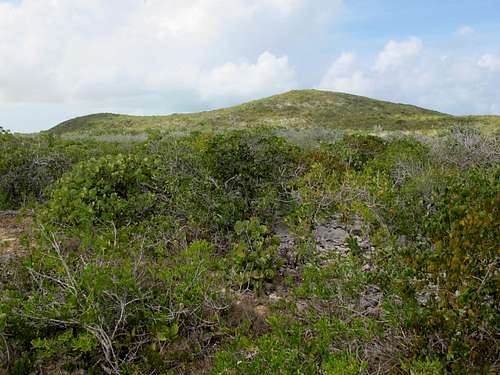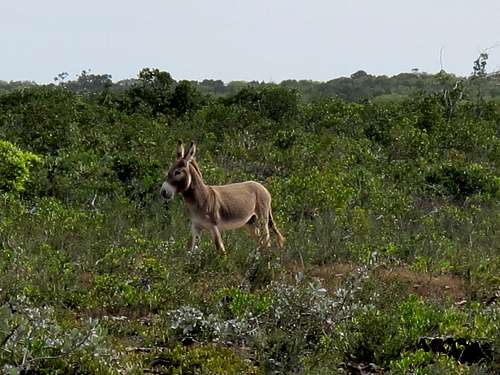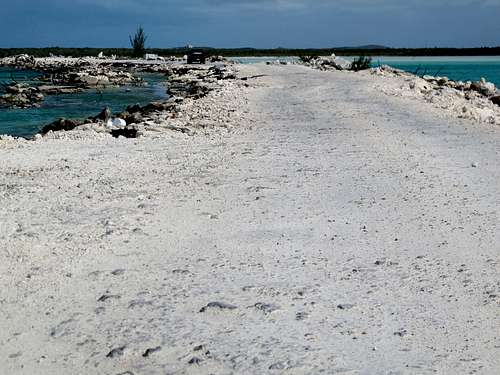-
 8419 Hits
8419 Hits
-
 79.78% Score
79.78% Score
-
 11 Votes
11 Votes
|
|
Mountain/Rock |
|---|---|
|
|
21.73292°N / 71.56418°W |
|
|
Download GPX » View Route on Map |
|
|
East Caicos |
|
|
Hiking |
|
|
Winter |
|
|
156 ft / 48 m |
|
|
Overview
Geography and Geology
At 156 feet above sea level, Flamingo Hill is the highest point in Turks and Caicos, topping the drive-up peak Blue Mountain on Providenciales just slightly. Flamingo Hill is located on the uninhabited island of East Caicos, which is known for its plantation ruins and caves. The island is 18 square miles and mostly covered by swamp and mangroves.
The peaks on East Caicos are the tops of ridges that resulted from accumulation of calcium minerals that precipitated out of sea water to form oolitic limestone, after which the sea receded. This process started as long ago as pre-Jurassic Period, 145 – 200 million years ago.
| | |
History
In the mid to late 1800’s, East Caicos was the center of administration of a 50,000 acre sisal plantation. Additionally, there are several caves on the island that were mined for bat guano. Cattle ranching was another business carried out during this time. To support the transportation of products from the interior to the port of Jacksonville in north East Caicos, a 14-mile railway was built. Products were carried on trolleys pulled by mules.
By the beginning of the 20th century, the declining need for sisal resulted in the island’s desertion. Since then, a few attempts were made at colonization of the island but today it is uninhabited.
There are some excellent links on the history of East Caicos here and here.
Wildlife
There is an abundance of wildlife on the island: bats, owls, wild donkeys, and in general the creepy-crawly things that are often found in the tropics. At one time there were herds of wild cattle, but it is reported that these have been extinguished by hunters.
Getting There
The closest international airport is in Providenciales. From there you can take a ferry to North Caicos. Because it will be a long day, it is best to take the 6:30 a.m. ferry or stay overnight on either North or Middle Caicos. A rental car can be arranged in advance to meet you at the ferry dock at Sandy Point. From there, drive to Middle Caicos. A map will be provided with your rental car. There is a causeway in between North and Middle Caicos. Some reports indicate that it is difficult to drive on this road, but it can be fairly easily navigated in a regular rental car – a jeep or 4WD is not needed.Alternately, there is a small airport on Middle Caicos.
Once on Middle Caicos, take the main road through Conch Bar and drive east toward Bambara. Just prior to reaching Bambara, turn north on a dirt road toward Bambara Beach dock. The turn for this road is located at N21.82082 W71.72350.
Getting to East Caicos requires an 11-mile boat ride from Middle Caicos. Therefore, a boat and captain must be hired to navigate the complex reef system between the islands. A guide is recommended to make these arrangements. A good guiding service can be found at the Amphibious Adventures website.
Red Tape
Other than the complex travel arrangements to get there, no special permits are needed.Camping and Lodging
Camping may be arranged through a guide service, who will recommend supplies. At certain times of the year, the mosquitos can be quite ferocious. The winter months are best for exploration.Lodging in North and Middle Caicos can be found by going to this site, then the North and Middle Caicos tab, then “where to stay”. A guide can also assist in finding accommodations.






